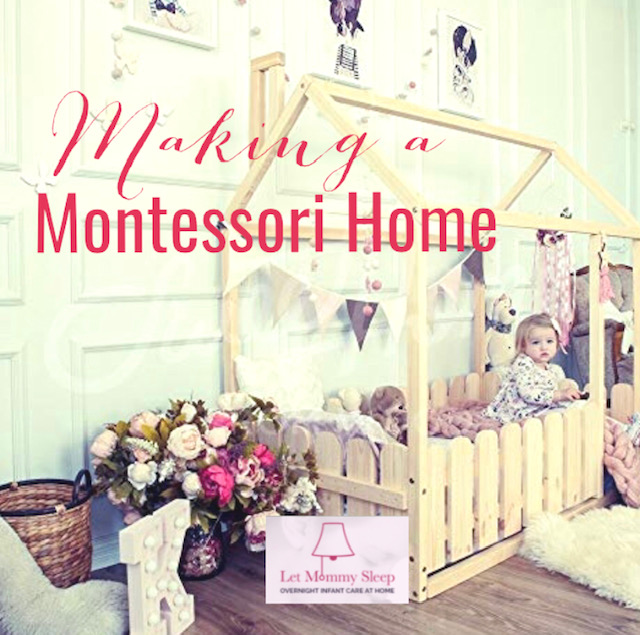Creating a Montessori Home for Babies and Toddlers
updated, August 18, 2023 – When Dr. Maria Montessori started her classrooms for children in Rome in the early 1900’s, she created an environment based around children. Her classes included child size sinks, toys and shelves so that the children could freely and independently explore. The children of varying ages were also responsible for keeping their classroom orderly. They helped make meals for each other and cleaned up after play and meals. As a result of this set-up, Dr. Montessori quickly observed that the children were calmer, more caring toward each other and able to focus on activities for longer periods of time. Creating a Montessori Home for Babies and Toddlers brings these findings to your home

Creating a Montessori Home for Infants and Toddlers
Many parents practice Montessori philosophies naturally, but want to implement the full program at home. Newborns and infants are of course a little more limited in what they can do but for older kids here’s what a Montessori program means:
- “Self-care: washing, dressing, toileting, and eating, according to each child’s individual capacity
- Care of the environment: cleaning, food preparation and food service; plant care and animal care
- Large-motor activities (indoors and out): walking, climbing, running, jumping, balancing, climbing steps, and more
- Fine-motor skills: reaching, grasping, picking up objects, transferring objects, using tools and utensils, doing art work
- Language: naming objects, describing actions and intentions, discussing pictures, conversation, music, and singing
- Social skills: developing manners through interactions with peers, teachers, and adult-led small group games”
Here’s how can you develop this type of learning environment in your own home:
- Furniture – For toddlers, place developmentally appropriate furniture in their play space and around the house. This means furniture that’s sized for the child and easily accessible.
- Rotate Toys – Don’t overwhelm your child with too many toys. eep a few toys available at a time and rotate them regularly. This maintains the baby’s interest and prevents overstimulation.
- Natural Materials – Avoid toys that have batteries, flashing lights or that play loud music. Instead, have an open play space with a few toys out on a shelf that a child can choose to play with. Montessori encourages uninterrupted, deep engagement with an activity, which can be compromised by constant noise or flashing lights.
- Safe Physical Play – Have a soft, physical playset area so baby can explore safely with minimal parent intervention. A playroom for an infant could also include a mirror so they can observe their body movements.
- Age Appropriate Tasks & Routines – Make helping with meals and household tasks a routine part of your child’s day. A learning tower in the kitchen allows little ones to safely and independently help with things like putting vegetables in a salad, rinsing plates or wiping down the counters.
Other examples of Montessori style learning are to bring elements of nature indoors, like plants and natural light. Toys such as puzzles, blocks, cardboard boxes, musical instrumentals and art supplies also allow your child to play and learn at their own pace, as creatively as they like.

Creating a Montessori Home for Babies and Toddlers – What About Sleep?
Sleep is probably the category where we see the biggest difference between Montessori philosophy and other parenting practices. When little ones, are ready to sleep alone in their own room, a Montessori nursery means not using a crib, and simply using a mat or a floor bed for sleep. This is part of creating freedom of movement, and an area where babies can safely explore if they wish.
To many parents in the US this sounds unsafe and a little strange, but it’s vital to understand that this sleeping arrangement would only occur in a securely and fully childproofed room, when a baby is ready to be on their own at night. Since the AAP recommends newborns and babies stay in the same room (but not the same bed) as their parents for 6 months after being born, baby would typically sleep in a bassinet next to parents’ bed for that timeframe. While a mat can certainly be used, a safe-sleep set-up using a firm flat mattress can also be effective.
Whether you choose Montessori or a traditional layout, a safe nursery is most important when designing your child’s room. Here is a breakdown of how to create a safe nursery from the newborn to toddler stage.
Categories
- Archives
- Baby Sleep Advice
- Expert Guides
- Hiring a Night Nanny
- Infant Safety
- Postpartum Health
- Twins & Multiples
